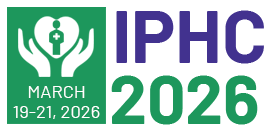Title : Transforming rural healthcare through professionalized community health workers: A model for universal health coverage in Uganda
Abstract:
In rural Uganda, where only 44% of births occur in health facilities and 25% of women experience depression, innovative approaches to healthcare delivery are crucial for achieving Universal Health Coverage. This presentation examines Nama Wellness Community Centre's (NAWEC) integrated community health model, which combines professionalized Community Health Workers (proCHWs), facility-based care, and digital health solutions to transform rural healthcare delivery. The model, implemented in Mukono District, Uganda, demonstrates significant impact through a network of 306 digitized proCHWs who are skilled, salaried, supervised, and supplied. Key innovations include the integration of digital health surveillance using the electronic Community Health Information System (eCHIS), community-based mental health interventions using the WHO's Interpersonal Psychotherapy for Groups (IPT-G) model, and comprehensive maternal-child health services. Analysis of program data from 2020-2024 shows remarkable outcomes: 333,268 clients served through integrated healthcare services, 426,822 household visits conducted, and treatment of over 20,489 cases of childhood illnesses. The mental health program has successfully managed 988 women and adolescents with a 91% recovery rate. The model maintains a 93% program functionality rate using the WHO Assessment and Improvement Matrix tool. This presentation will discuss the key elements of success, including the digitization of CHWs, integration with government health facilities, and innovative approaches to mental health support. We will also share lessons learned in scaling from 100 to 306 CHWs, and plans for expansion to 2,361 CHWs across Mukono and Buikwe districts. Our experience demonstrates that professionalized CHWs, when properly integrated into the health system and supported with digital tools, can significantly improve healthcare access and outcomes in rural communities. This model offers valuable insights for policymakers and implementers working to strengthen community health systems in resource-limited settings.



